Travel Trends: Why Private Villas Are the New Way to Vacation in Europe
As European destinations welcome travelers back to their shores, these five exclusive-use villas are offering guests the ultimate in pampered privacy
As European destinations welcome travelers back to their shores, these five exclusive-use villas are offering guests the ultimate in pampered privacy
Safety is the new luxury, according to top travel operators across the world—a trend they’re seeing thanks to travelers opting to prioritize privacy and well-being in the vacations they choose. And when it comes to private villas, and the heightened control of their surroundings they provide, you’re not only guaranteed safety but high levels of seclusion and luxury, too.
“We’ve seen an 80 percent increase in bookings for private villas,” says Pete Brudenell, head of marketing at CV Villas, a bespoke travel company that operates throughout the Mediterranean. “A lot of first-time villa holiday goers are moving over from high-end hotels. By booking a villa, travelers are guaranteed the space and privacy they are looking for, with protocols ensuring a safe getaway.”
So, if you’ve ever dreamed of having an uninterrupted view of the Santorini seafront or an ultra-exclusive slice of the Côte d‘Azur, these recently debuted private villas are the very best way to vacation in Europe.
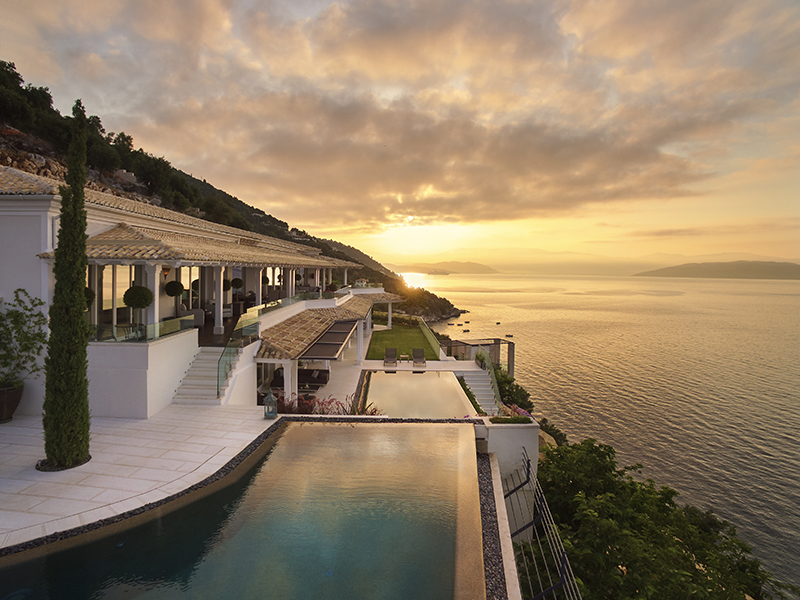
June 2020 saw the opening of this ultra-luxury villa, with its own private dock on rugged coastline overlooking the Adriatic Sea. Fusing five-star luxury with the privacy of a home, this six-suite villa comes with amenities such as a spa, a cinema, and a two-level infinity-edge pool, as well as Ultima Collection’s signature service, which includes concierge, a chauffeur, a private chef and housekeeping. The interiors span an impressive 10,765 square feet (1,000 sq m), with a central kitchen and dining room featuring a large dining table and fireplace. A glass lift connects the villa with its waterfront terrace, where there are two areas carved out of the rocks for sunbathing.
ultimacollection.com
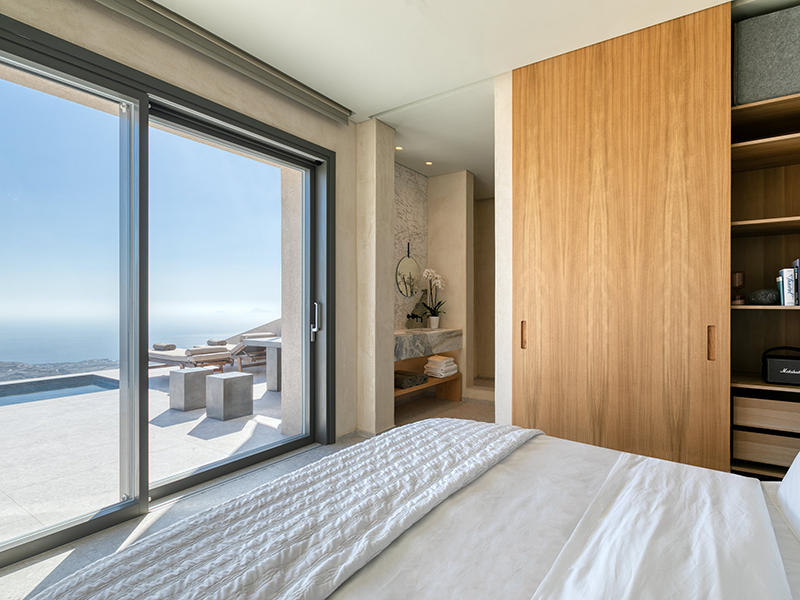
Officially opening this season, following a soft launch last summer, this eight-villa retreat is now hosting guests at the highest point of Santorini. Santorini Sky looks out across the island from its position atop Prophet Elias mountain, which rises up to 2,000 feet (610 m). In this remote location, guests stay in villas that were designed by the renowned architect Vassilis Zorzos, using local materials that blend into their surroundings. The environmentally conscious retreat’s Master Villa comes with a modern kitchen, spacious living area, and private terrace with infinity-edge pool and separate Jacuzzi, as well as a master suite with floor-to-ceiling glass.
santorinisky.com
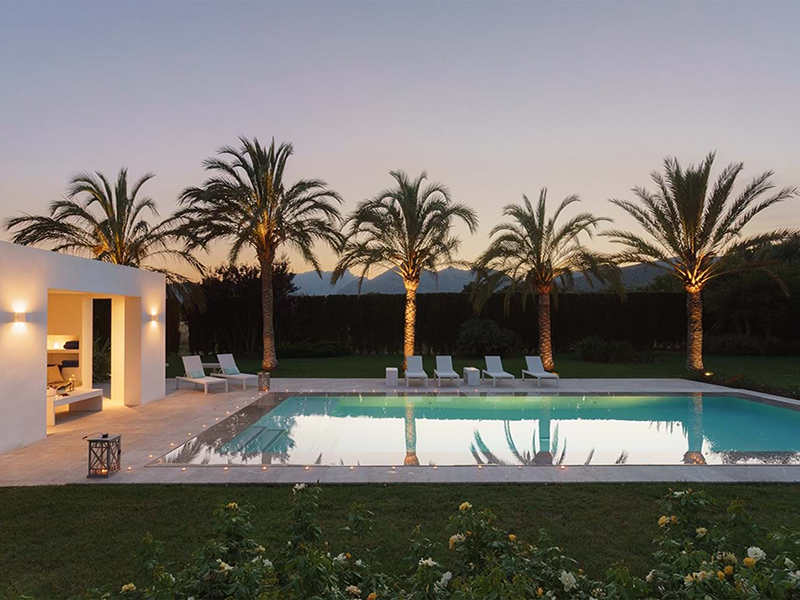
New to the CV Villas portfolio, this private retreat places guests on the northern side of Mallorca, within easy reach of Pollença town. The modern villa comes fully staffed and features luxury amenities, including a cinema, playroom, and gym, in addition to its extensive living space and four bedrooms. The expansive outdoor area is a highlight, with lush gardens surrounding an outdoor kitchen—complete with a built-in barbecue and covered dining area—a heated swimming pool, and an outdoor shower.
cvvillas.com
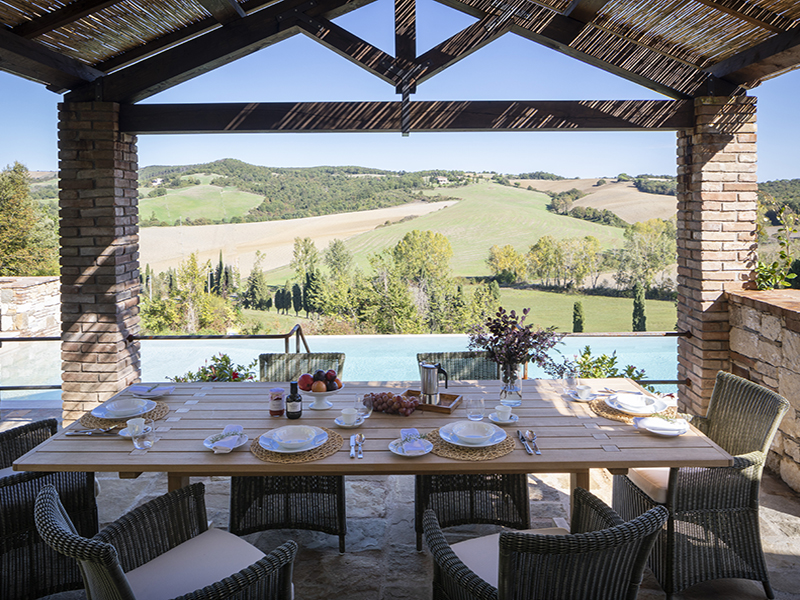
The brand-new, two-bedroom Villa La Lavandaia hosts guests staying at luxury Tuscan estate Borgo Pignano. Situated at the top of the hill, with a terrace providing far-reaching views over the Tuscan countryside, the renovated villa takes over a historic and thoughtfully restored building, and boasts a fully equipped kitchen and private heated pool. Guests can make the most of the facilities offered by the sustainable retreat—such as two restaurants—or simply embrace the privacy of one of Tuscany’s most exclusive villas.
borgopignano.com
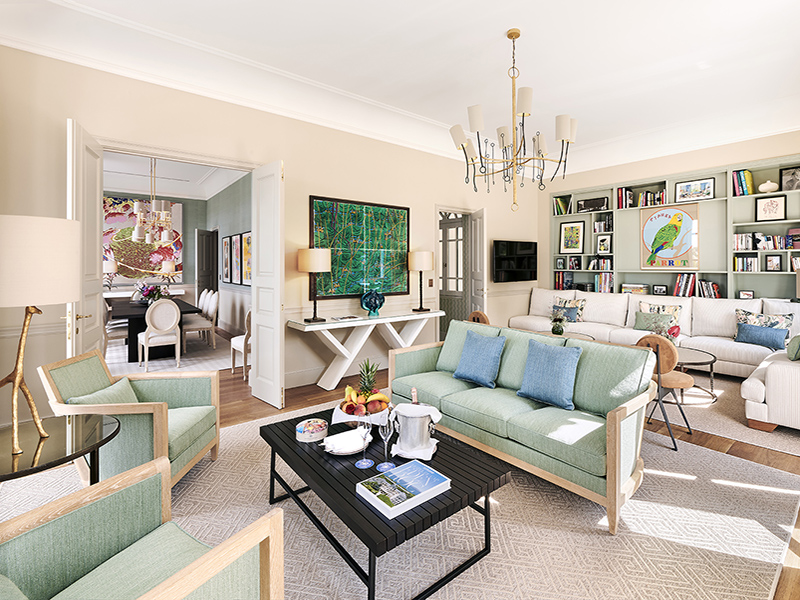
The Côte d’Azur’s legendary Hotel du Cap-Eden-Roc introduced its newest villa this June—the ultra-exclusive, five-bedroom Villa Sainte-Anne. After purchasing this historic building in 2019, Hotel du Cap-Eden-Roc spent two years transforming the property and its gardens. The villa now comprises five bedrooms, all with a dressing room and bath, along with stylish living and dining areas, and a spa with a sauna, steam room, hammam, and gym. The sprawling gardens include a terrace and pool with views across the bay of Juan-les-Pins. A butler, chauffeur, and car are among the services included.
oetkercollection.com
A waterfront villa in Dubrovnik, Croatia

This seven-bedroom villa, on the market with Remington Realty, is positioned directly on the coastline of the Dubrovnik Riviera, with uninterrupted views over the water and its own private beach. Six bedrooms occupy the contemporary villa’s three floors, with another bedroom with a kitchenette and private lounge area comprising the guest house suite. The generous living space features floor-to-ceiling windows, and an outdoor terrace boasts a swimming pool, outdoor kitchen, and spectacular covered dining area.
A sea-view mansion in Cannes, France
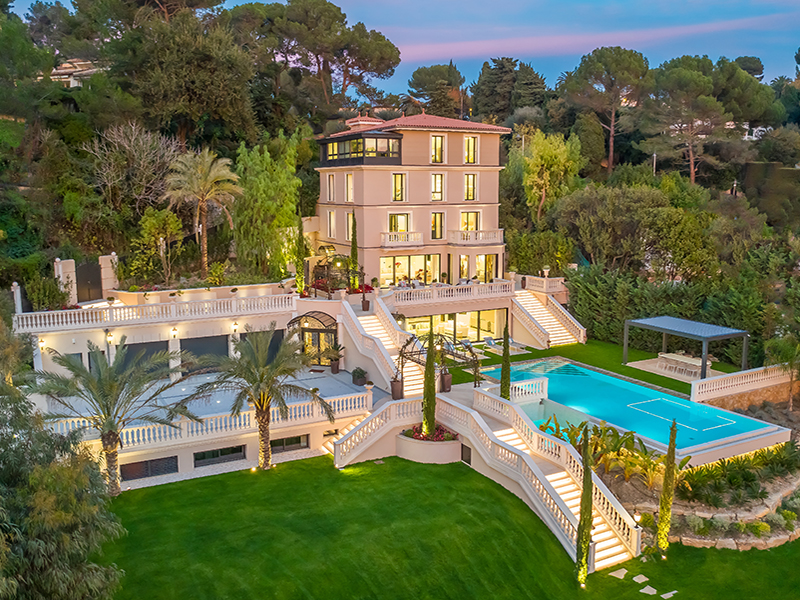
Located within the prestigious Californie area of Cannes, this villa-style mansion lies amid almost 32,290 square feet (3,000 sq m) of lush greenery, and is available through Michaël Zingraf. Impressive views over the sea and coastline can be taken in from the pool and outdoor living area, or through bay windows opening on to the terraces. The property’s nine bedrooms are joined by six full and four partial baths, and a gym, spa, office, and home theater.
A modern eco-villa in Marbella, Spain
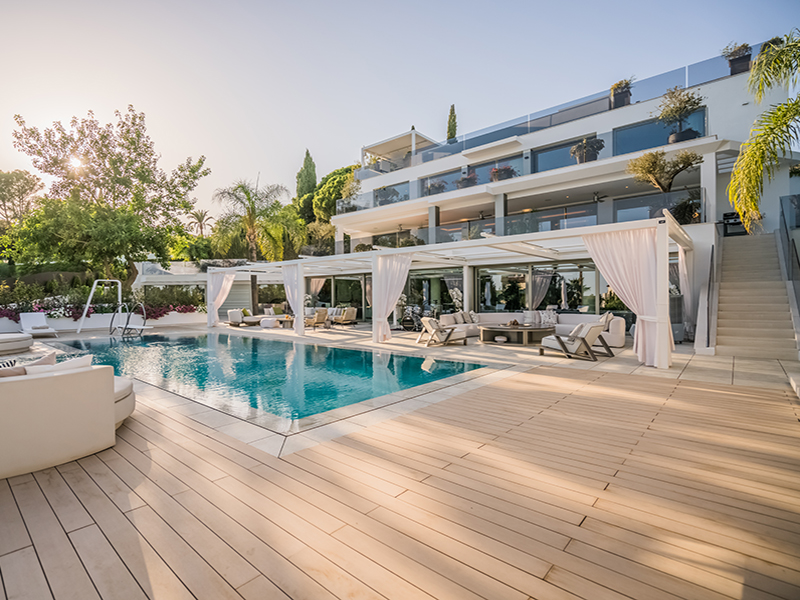
On the market with Costa Del Sol 365, this eco-luxury villa is situated in a scenic location overlooked by the Sierra Blanca mountains. It combines glamour and elegant simplicity within a 53,820-square-foot (5,000 sq m) plot in the exclusive community of Cascada de Camojan. Eight bedrooms and nine baths occupy the home’s four floors, which also house expansive living and dining areas, a cinema, and a rooftop terrace. Make use of the indoor pool, yoga center, and gym, which all come with garden and ocean views.
Banner image: The Ultima Corfu villa in Greece